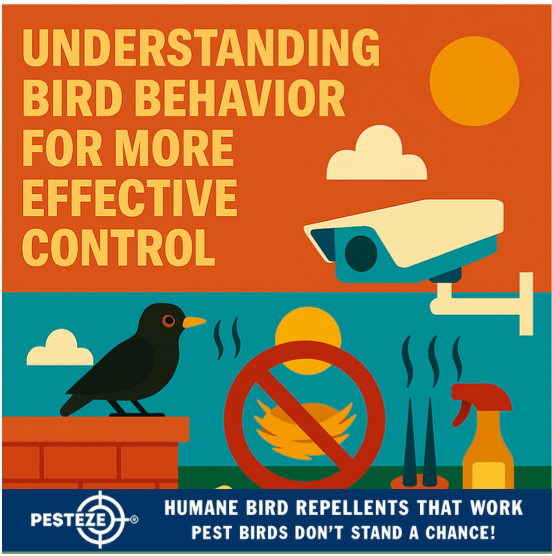UNDERSTANDING BIRD BEHAVIOR FOR MORE EFFECTIVE CONTROL

UNDERSTANDING BIRD BEHAVIOR FOR MORE EFFECTIVE CONTROL
SUMMARY
Bird behavior science provides the key to developing more humane, intelligent, and effective wildlife management strategies, transforming traditional pest control approaches in 2025.
FEATURES
- Scientific Insight: Deep dive into ornithological research that reveals complex bird behavioral mechanisms.
- Psychological Approach: Understanding the cognitive and environmental drivers of bird populations.
- Adaptive Strategies: Developing nuanced control methods based on species-specific behavioral patterns.
- Humane Management: Approaches that respect wildlife while protecting human environments.
- Ecological Balance: Methods that integrate bird behavior understanding with broader ecosystem preservation.
GUIDE DESCRIPTION
Bird behavior represents a complex interplay of biological instincts, environmental adaptations, and survival mechanisms. Effective wildlife management moves beyond simple deterrence, requiring a sophisticated understanding of the intricate ways birds perceive, interact with, and respond to their environments.
Territorial behaviors drive many bird interactions with human spaces. Birds are not randomly aggressive or invasive, but respond to specific environmental triggers. Understanding these triggers—such as perceived threats, mating season dynamics, and resource availability—allows for more targeted and effective management strategies.
Cognitive capabilities of birds far exceed traditional assumptions. Many species demonstrate remarkable problem-solving skills, memory, and adaptive learning. This intelligence means that static, predictable deterrent methods quickly become ineffective. Modern control strategies must continuously evolve, presenting dynamic challenges that birds cannot easily overcome.
Sensory perception plays a crucial role in bird behavior management. Birds experience the world through different sensory mechanisms than humans, with heightened abilities to detect ultraviolet light, magnetic fields, and subtle environmental changes. Effective control methods must consider these unique perceptual capabilities.
Seasonal and environmental factors significantly influence bird behaviors. Migration patterns, breeding cycles, food availability, and climate changes create complex behavioral modifications that require adaptive management approaches. A one-size-fits-all solution becomes impossible when confronting the nuanced world of avian populations.
Technological innovations in 2025 provide unprecedented insights into bird behavior. Advanced tracking technologies, behavioral analysis algorithms, and sophisticated monitoring systems allow for more precise, targeted, and humane wildlife management strategies.
- Pukhraj Sharma


Comments 0